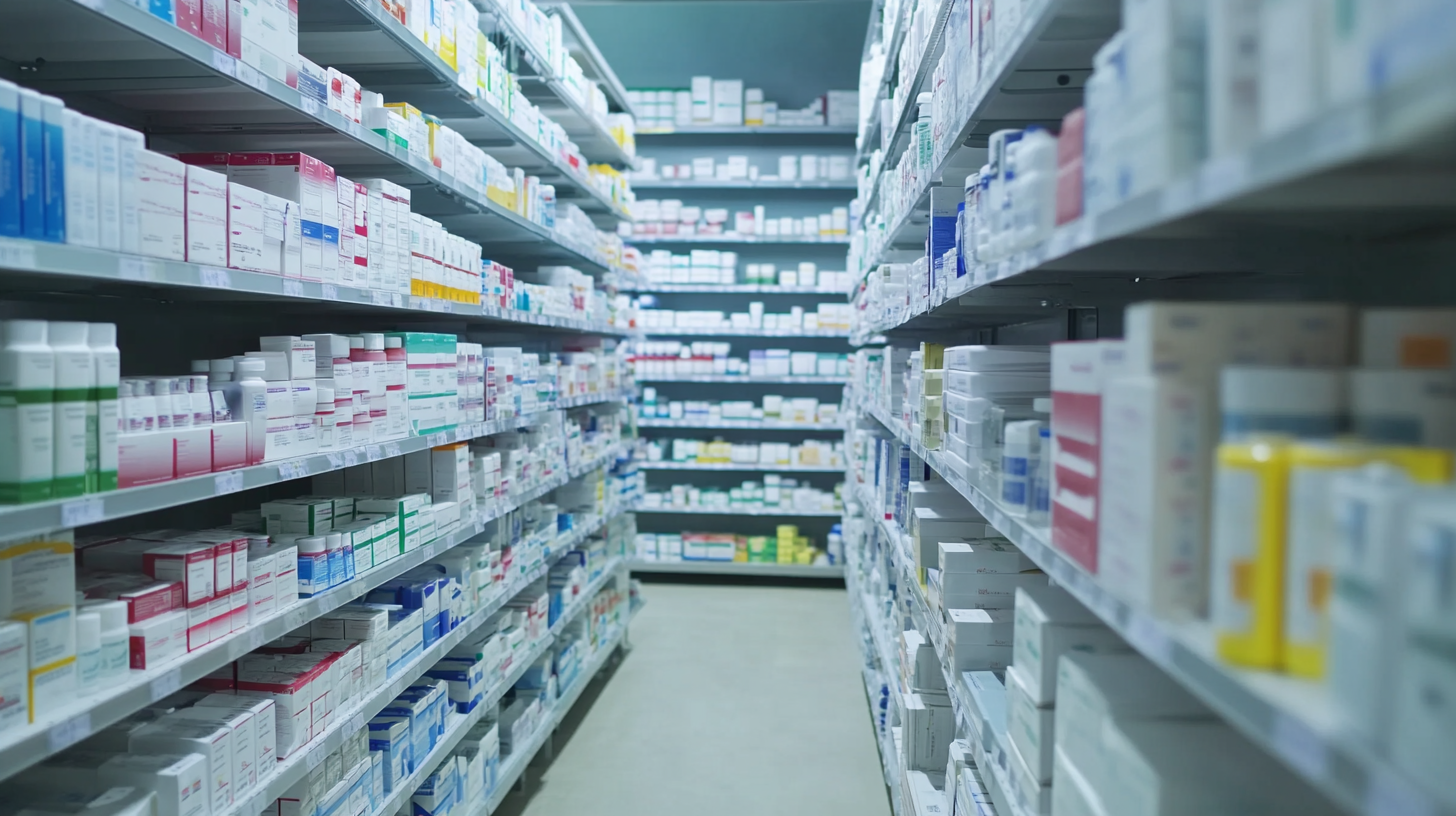Click here to browse our On The Mend Portfolio!
Transforming Healthcare with Medical Supplies 5 Key Benefits Driving Global Procurement Strategies
The increased role that medical supplies play in enhancing patient care and driving operational efficiencies in an ever-dynamic healthcare landscape is really vital. And as so many global procurement strategies are advancing at rapid rates, it will also be imperative to understand the importance brought by medical supplies into healthcare systems worldwide. From improved patient outcomes to greater cost-effectiveness, medical supplies enable fast and efficient treatment but also allow healthcare providers to adjust to new requirements and challenges.
Procurement strategies for medicine were integrated by adding innovative medical supplies in order to capture any possibly large points of influence in healthcare delivery. Most organizations now will strive to improve their supply chains and achieve the right products, at the right time, by incorporating new technologies into their systems and streamlining processes. This blog will illustrate the five driving reasons behind global procurement strategies within the purview of medical supplies and show how these factors would prove to be key to future capability for the medical sector.

Leveraging Advanced Medical Supplies for Enhanced Patient Outcomes
The incorporation of advanced medical equipment into the healthcare sector over the past years has greatly heightened positive patient outcomes. One of the most conspicuous examples has been that of the launch of new-generation radiation therapy equipment by Zhongjiu Flash Medical Technology, which reduces the duration of treatment from 15 minutes to just one second. Such a technological miracle forms proof of how technology is changing the way medical treatments toward efficient and patient-centered approaches are done in clinical settings. In fact, along this line of global procurement strategy, the Beijing Changping International Medical Device City is committed to delivering an international-grade industrial cluster of medical devices. Such a cohesive partnership invites all those strides to engage the innovation community and the healthcare professionals in ensuring that the future medicine becomes even more accessible. Reports within the industry indicate that effective incorporation of advanced medical supplies may allow reductions of treatment costs in the order of 30% and at the same time improve the quality of care of patients. Strategic partnerships such as this one between Southern Medical University Shenzhen Hospital and great high-tech medical corporations highlight the importance of partnership in medical advancements. There would be centers for demonstration between the partnership and direct approach to clinical application to bring even breakthrough research into real-life outcomes for more people's health using new medical hardware solutions. The next phase that would mark an important point on the future of health systems worldwide and, in fact, within their reach, will now be about putting into practice the promise of advanced medical supplies.

Streamlining Global Procurement: Cost Efficiency and Accessibility Gains
Amidst the panorama of global health procurement today, the emphasis on efficiency in captures and increases in access has never been more critical. In fact, the World Health Organization in a recent report estimates that enhanced procurement methods and supply chain management can save up to $500 billion in healthcare expenditures every year. Here, the figure conveys a lot when it boils down to potential financial relief in most developing and underdeveloped countries where allocation of resources is more often under critical conditions.
Enhanced global procurement cuts down costs while improving access to critical medications. In fact, it leads to improvements of lead times on critical products of up to 30%, making the health care provider's response to patients really short, according to data from the Global Health Supply Chain Program. For instance, in the event of an emergency such as a pandemic during which public institutions are required, procurement becomes streamlined as they can stockpile what is essential as quickly as possible. The outcome defines the patients positively.
Technology also augments cost efficiency and accessibility for the purchase of goods. For example, a study published by McKinsey in 2022 reports that digital tools in organizations created for supply chains bore goods at a price 20 percent lower than other channels of such inventory visibility. Therefore, this advancement in technology does not only smooth out operations but also enhances collaboration between the involved suppliers and health care providers, providing world's best equipment services to those most in need at their critical moments.

The Role of Technology in Modernizing Medical Supply Chains
The technology infusion in the supply chain management within the medical arena will prove out to be potentially one of the most transforming changes in healthcare. While modernization of these supply chains could mean improvement of efficiency in care delivery, it generally enhances the overall quality of patient care. Newer technologies-such as artificial intelligence, block chain, and Internet of things-smoothen the operations in such a way that healthcare providers gain the advantage of managing and tracking their inventories and supplies as they would real-time.
AI is establishing itself in the area of demand forecasting and inventory management by predicting shortages before they occur and providing assurance that essential supplies will be ready whenever they are needed. Returning on investment reduces costs through efficiency and service but saves waste from overproduction into the bargain. Meanwhile, blockchain gives such an unmodifiable ledger that an extreme level of transparency and traceability of medical supplies is achieved that the possibilities for counterfeit products infiltrating the supply chain are dramatically diminished.
IoT has useful and flexible integrated features that allow interaction among all parties in the ecosystem. Real-time data from connected devices are very useful regarding understanding trends of usage and bottlenecks in operation, quickly sweeping towards changing strategy. Yes, in fact, the function of technology in updating the medical supply chain promotes efficiency alongside other factors in improved patient outcome access to essential medical supplies.

Meeting Regulatory Standards: Ensuring Quality in Global Procurement
It is of utmost importance in global procurement of medical supplies to meet regulatory standards to guarantee that the products satisfy the safety and efficacy demands and meet the different international regulations. Deloitte's analysis states the global health supply chain is expected to be valued at USD 2.4 trillion by 2025, with regulatory compliance increasingly challenged by the fact that standards vary among regions. Organizations will need to navigate this environment well to procure quality supplies that meet the rigorous standards set by regulatory bodies like the FDA, EMA, and WHO.
One of the significant issues impairing compliance is the constant monitoring and evaluation of suppliers. A study conducted by the World Health Organization indicates that 10% of medical products in low- and middle-income countries can be termed as substandard or falsified. Thus, the importance of implementing a rigorous supplier-selection approach coupled with ongoing quality assessment of its suppliers to keep the evaluated records of each product needs assessment done on the items procured toward keeping them up to the regulatory standards and protect patient health, as well as meaningful healthcare outcomes.
Succinctly written, advanced technologies have the potential to streamline compliance immensely. Use of data analytics and AI in procurement strategies gives healthcare organizations much higher potential in traceability and risk management, as stated in a report by McKinsey. With the above state-of-the-art tools, healthcare providers can assume much higher levels of compliance with regulatory standards through the optimization of their procurement systems, eventually transforming healthcare delivery globally.
Sustainable Practices in Medical Supply Sourcing for Future Resilience
The ever-changing landscape of global challenges has seen growing concerns about sustainable methods of sourcing medical supplies within the healthcare sector, which will be central to future resilience. Recent studies have indicated that the strategic integration of sustainability into procurement practices is a powerful way to reinforce supply chains. Medical technology companies are implored to actively engage in restructuring with a mindset for resilience underpinned by supply chain flexibility and transparency.
Such responses do not exist in a classical way but rather as strategies pre-empting disruptions. Interruption is reported to affect the supply chains approximately every 3.7 years, emphasizing the importance of maintaining a proactive approach to risk management. With a heightened sense of awareness and agility, healthcare-related companies will stand a better chance to maneuver the complex dynamics accompanying global supply chains while operating towards sustainable development goals.
Besides, the transition towards the digitization of manufacturing processes will prove vital in managing these transformations. Employing new digital technologies allows companies to respond quickly to unexpected challenges: an indispensable step towards sustainability and resilience. As the healthcare landscape evolves, creating sustainable supply chains will guarantee not only operational efficiency but also the healing of the planet, thereby laying a strong foundation for future health care systems.
View Products
- Bathroom Safety & Shower Systems
- Canes, Knee Walkers, Rollators & Wheelchairs
- Compression Socks, Stockings & Custom Garments
- CPAP Machines, Devices, Accessories & Supplies
- Incontinence Supplies
- Lift, Reclining, and Sleeper Chairs
- Power Scooters, Power Chairs & Accessories
- Ramps & Handicap Access
- Stair, Platform & Portable Lifts
- Blog
Our Locations
Visit Us in CT, NY & CA
Looking for a 'medical store near me'? Call On The Mend for the equipment and service you need!
